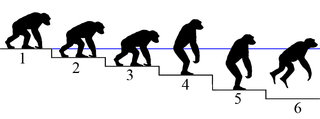Fraggle Rocker
Staff member
Not true. Hominoidea is the superfamily including all of the tailless primates, i.e., the Lesser Apes or gibbons (family Hylobatidae) plus the Great Apes (family Hominidae)--the family of which our species Homo sapiens is a member.In all fairness, the term "ape", loosely used, usually does not include humans. But in stricter terms, we usually mean "anthropoid apes plus humans" when we say "apes", esp. "great apes". One of the sources of confusion here is that "ape" is not a taxon (Homo is a genus and sapiens is a species).
The next higher taxon is the parvorder Catarrhini, which includes Hominoidea and Cercopithecoidea (the Old World monkeys).
Ardipithecus was a herbivore (like all of the living apes except our own species), subsisting on leaves and enough arthropods and other small animals to provide adequate protein. They had no more trouble harvesting enough food within the forest than the modern gorillas. The ability to walk bipedally and carry a much larger load of plant tissue in their arms than a gorilla is assumed (they thoughtlessly didn't leave us any photos) to have been the catalyst for division of labor between the females (full-time childcare) and the males (full time harvesting).Except quick access to trees would be in the forest, and the armloads of food would not be - forests don't produce armloads of hand-foraging food at ground level, or within walking distance of a given spot (even for competent bipeds), as a rule.
Fine. Not being an actual professional scientist, I prefer to refer to a discredited hypothesis as a "speculation" instead of a "blunder."The savannah ape was not mere "speculation", but the firmly defended and conventional wisdom that dominated the discussion.


